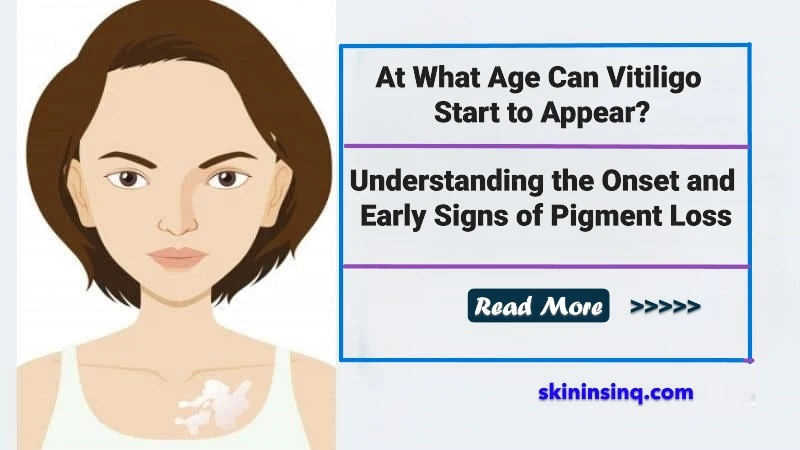At What Age Can Vitiligo Start to Appear? Understanding the Onset and Early Signs of Pigment Loss
At What Age Can Vitiligo Start to Appear? Understanding the Onset and Early Signs of Pigment Loss
Vitiligo is a skin condition marked by the gradual loss of pigment, resulting in white patches on various parts of the body. One of the most commonly asked questions about vitiligo is when it typically begins. While the condition can technically appear at any age, certain age ranges are more commonly associated with its onset. Understanding the typical age of onset and early signs can help in early diagnosis, better management, and emotional support.
Typical Age of Onset
Vitiligo can begin at any age, from early childhood to late adulthood. However, studies and clinical observations show that:
-
Most cases develop before age 30
-
50% of people with vitiligo notice symptoms before age 20
-
Childhood onset (before age 12) is also fairly common
In rare cases, vitiligo may even appear in infants or much later in life, such as in the 40s or 50s. Early onset, especially during childhood or adolescence, is often linked to genetic factors or a family history of autoimmune conditions.
Why Does Vitiligo Start at These Ages?
The exact reason why vitiligo starts at a particular age isn’t fully understood, but several contributing factors may include:
-
Genetics: A family history of vitiligo or autoimmune diseases increases the likelihood of early onset.
-
Autoimmune activity: Since vitiligo is considered an autoimmune disorder, it may emerge alongside other immune system changes, often during adolescence or young adulthood.
-
Environmental triggers: Sunburn, emotional stress, skin injury, or exposure to certain chemicals can sometimes trigger vitiligo in individuals who are genetically predisposed.
-
Hormonal changes: Puberty is a period of hormonal fluctuation, which may explain why many cases start during the teenage years.
Early Signs of Vitiligo
Recognizing the early signs of vitiligo is essential for timely diagnosis and treatment. Some of the initial indicators include:
-
Small, pale or white patches on the skin that gradually increase in size
-
Common locations: face, hands, feet, elbows, knees, and around the eyes, mouth, or genitals
-
Symmetrical patterns on both sides of the body (in generalized vitiligo)
-
Premature graying of hair on the scalp, eyelashes, eyebrows, or beard
-
Change in eye or lip color in rare cases
These changes are usually painless but can cause emotional distress, especially in young individuals.
Importance of Early Diagnosis
Although there is no permanent cure for vitiligo, early diagnosis can help slow its progression and manage symptoms effectively. Treatment options such as topical corticosteroids, light therapy, or immune-modulating creams can be more effective when started early. Moreover, psychological counseling and support play a crucial role, especially for children and teenagers coping with the visible changes.
Conclusion
Vitiligo commonly begins before the age of 30, with many cases appearing in childhood or adolescence. While the exact age of onset varies from person to person, early detection and proper care can make a significant difference in managing the condition. If you or a loved one notices unexplained white patches on the skin, it’s important to consult a dermatologist for an accurate diagnosis and appropriate treatment plan.

Related Blog
What Causes Oily Skin and Can It Be Managed Naturally? Exploring Root Causes and Gentle Solutions
Aug 2, 2025 by Admin
General
What Are the Signs That You Have Sensitive Skin? Key Symptoms to Help You Identify This Delicate Skin Type
Aug 1, 2025 by Admin
General